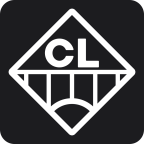1. Can diode laser cutting cut transparent acrylic?
After fine adjustment of relevant parameters, the diode laser (≥ 30 W) can cut transparent acrylic with a thickness of about 6 millimeters.
Laser Power
Use 65–70 % of the diode’s peak output to balance cut quality and speed.
Cutting Speed
Aim for 5–8 mm/s: slower speeds risk excessive melting; faster speeds may not penetrate fully.
Focal Position
Set the focal point approximately 6 mm above the material surface for a clean edge.
Material Type
Cast acrylic yields smoother edges than extruded acrylic due to its uniform molecular structure.
2. Choosing the Right Laser for Transparent Acrylic

Thin Sheets (≤6 mm): Diode lasers work well if heat input is strictly controlled.
Thick Sheets (>6 mm): CO₂ lasers are preferable—10.6 μm wavelength is absorbed more effectively by acrylic.
3. Core Cutting Techniques
(1)Anti-Reflective Measures
Elevated Cutting: Place the sheet on slats or a honeycomb bed to minimize back-reflection damage.
Black Honeycomb or Blade Support: Absorbs stray light beneath the cut.
(2)Thermal Management
No Assist Airflow: Disable air assist to avoid whitening or rippling at the cut edge.
Layered Cutting for Thick Sheets: Limit each pass to ≤3 mm depth to reduce heat buildup.
(3)Post-Cut Finishing
Flame Polishing or Sanding: Remove micro-cracks and restore clarity.
Low-Temperature Annealing: Optional for components requiring ultra-high edge precision.
4. Pre-Cutting Preparation
Material Selection:
Choose cast acrylic for smoother, clearer edges.
Surface Cleaning:
Remove any protective film if your laser can’t cut through it.
Machine Setup:
Head Height: Adjust to ~6 mm above the workpiece.
Optics: Clean focus lens and mirrors to prevent beam distortion.
5. Recommended Cutting Parameters

6. Advanced Cutting Tips
Floating Cut
Use elevated slats and minimal clamping to avoid diffuse reflections on transparent materials.
Edge Effects
For frosted edges, enable low-flow assist gas.
For crystal-clear edges, flame-polish immediately after cutting.
7. Troubleshooting
White or Uneven Edges:
Lower power or increase speed to avoid over-melting.
Burn Marks from Honeycomb Reflections:
Turn off airflow and switch to floating-cut setup.
Incomplete Cuts:
Increase power or reduce speed; for thick sheets, use layered passes.
8. Safety Precautions
High Reflectance: Transparent acrylic reflects 30 %+ of diode-laser wavelengths (405–450 nm). Ensure protective beam enclosures.
Fume Extraction: Acrylic vapor can contain trace hydrogen cyanide when cut by CO₂ lasers; use forced exhaust.
9. Key Advantages of Diode-Laser Cutting for Acrylic
High Precision & Quality
Kerf width: 0.10–0.20 mm
Positional accuracy: ±0.05 mm
Non-contact process → no mechanical stresses or burrs.
Flexibility & Efficiency
Rapid prototyping without custom fixtures.
Speeds up to 40 m/min with automated control.
Low Energy & Compact Equipment
Smaller footprint, lower power draw vs. CO₂ lasers.
Dynamic focal adjustment for sheets ≤6 mm.
Controlled Thermal Impact
Shorter wavelengths (405–450 nm) concentrate heat in a small volume, reducing deformation.
Minimal smoke output, easing filtration demands.
Typical Applications: Signage, decorative panels, transparent enclosures, and precision-cut display fixtures.
10. Risks & Considerations
High Reflectivity: Up to 30 % reflectance; always use beam-safe enclosures and filters.
Toxic Fumes: CO₂ cutting of acrylic generates fumes that require proper ventilation and filtering.
By combining the above parameters, techniques, and precautions, you can achieve clean, precise cuts in clear acrylic using a diode laser. Always conduct a test cut on scrap material to fine-tune settings before full-scale production.









